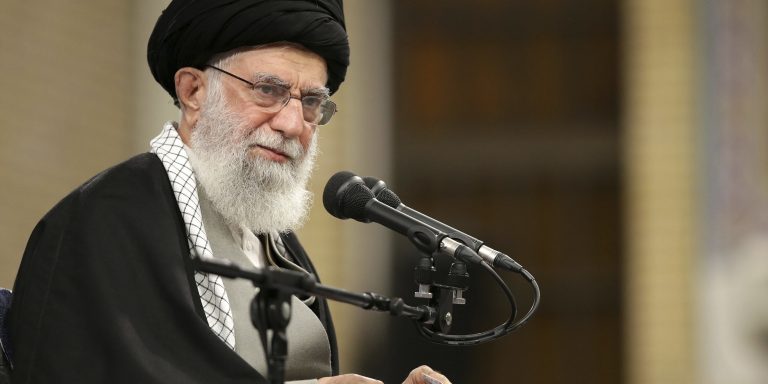INTELBRIEF
January 14, 2020
IntelBrief: The Iranian Threat to the U.S. Homeland

- Following the strike that killed Qasem Soleimani and the Iranian response that targeted Iraqi bases, the possibility of a conventional war between the United States and Iran seems to have diminished.
- Despite the decreasing tensions, both Washington and Tehran are likely to engage in asymmetric action against each other, and the United States has already levied new sanctions against Iran.
- Iran’s final reply to the U.S. military strike and death of Soleimani is likely to be carried by a proxy, and may be months or years in the making.
- Iran can project power beyond the borders of the Middle East through proxies that maintain a global footprint, including in the United States.
.
Following the January 2, 2020, targeted military strike that resulted in the death of Qasem Soleimani, the United States prepared for an Iranian response. Five days later, Iran responded with conventional force by launching nearly two dozen ballistic missiles at Iraqi bases where U.S. troops are stationed. No American forces were killed in the attack. Shortly after the Iranian strike, Foreign Minister Javad Zarif tweeted that Iran had concluded its response to the U.S. killing of Soleimani. To further deescalate the situation, President Trump similarly tweeted that the United States was disinterested in continuing tit-for-tat strikes. In the short-term, it seems that the United States and Iran are toning down their rhetoric and actions that could allow for continued conventional military responses. Following the Iranian strikes on the Iraqi bases, the U.S. government quickly pivoted back to a familiar tool in the struggle with Tehran – sanctions. On January 10, as part of the U.S. maximum pressure campaign (which Iran deems economic warfare), the U.S. Department of the Treasury sanctioned eight Iranian officials as well as the largest steel, aluminum, copper, and iron manufacturers based in Iran. As the United States continues to ratchet up sanctions, Iran will likely use the most potent weapon in its playbook – its proxies and clandestine agents to strike U.S. and allied interests in the Middle East and beyond.
The Iranian strike of the Iraqi bases is likely considered, especially among the regime’s hardliners, an insufficient response to the death of the second-most influential figure in Iran. However, Iran also likely calculated that raising the stakes too quickly and striking the United States or its interests directly would likely risk a harsh U.S. reply that could diminish the ability of the current regime to retain power. As such, Iran’s full response to Soleimani’s death could be months or years in the making. Iran certainly can use its Iraqi-based proxies, like Kata’ib Hezbollah (KH) and the recently FTO designated Asa’ib Ahl al-Haq (AAH), to strike U.S. interests inside Iraq, with the long-term goal of ejecting American troops from the country. While Iran may avail itself of KH and AAH (while also cultivating new proxies) to continue action against the United States, Iran retains the ability to project a threat beyond the borders of the Middle East. Iran and its proxies operate in Europe, Asia, South America, Africa, and the United States, and have a violent and long history of successful attacks. In the 1990s, Lebanese Hezbollah (LH), Iran's most potent proxy,carried out two VBIED attacks in Argentina that killed more than 100 combined people. In 2012, LH carried out a suicide bombing attack in Burgas, Bulgaria, that resulted in the deaths of 7 individuals with dozens more injured. In 2013, in Nigeria, three LH operatives were arrested for planning attacks against U.S. and Israeli interests. In June 2019, in London, a large cache of ice packs containing ammonium and other explosive materials were confiscated from LH operatives.
Despite President Trump’s announcement that Iran was targeting four U.S. embassies, there are no imminent or credible indications that Iran or its proxies are poised to strike the United States or its interests soon. However, the threat to the United States, including the homeland, is real. Iran and its proxies have a pattern of behavior that suggests a strong presence in the United States. From 2007-2011, LH orchestrated a sophisticated money-laundering operation that spanned five continents. Before it was halted, it was estimated that $329 million of LH funds entered the U.S. formal financial system. Iran's efforts in North America, however, are not strictly limited to finance. In 2011, the IRGC-QF plotted to assassinate the Saudi Ambassador to the United States. Finally, numerous LH operatives, most associated with the group’s external operations wing known as the Islamic Jihad Organization (IJO), have been arrested and prosecuted in the United States.
In September 2019, the Department of Justice indicted multiple IJO operatives for conducting surveillance and intelligence gathering in major U.S. cities, to include New York City. Shortly after the Solemeini strike, the Department of Homeland Security sent out a new announcement via its National Terrorism Advisory System (NTAS) that highlighted a need for increased vigilance and noted Iran and LH’s ‘demonstrated intent and capability to conduct operations in the United States.’ John Miller, the New York City Police Department’s Deputy Commissioner for Counterterrorism, recently wrote, ‘we already know that Soleimani directed the most experienced terrorist organization [LH] under his control to study New York City closely for the day the Iranian government decided conditions were right to strike on U.S. soil.’ While it remains unlikely Iran would strike the U.S. homeland directly, Iran likely has the capacity to do so. However, if the current regime’s existential survival is assessed to be at stake, the U.S. should prepare for direct strikes.
.
For tailored research and analysis, please contact: info@thesoufancenter.org